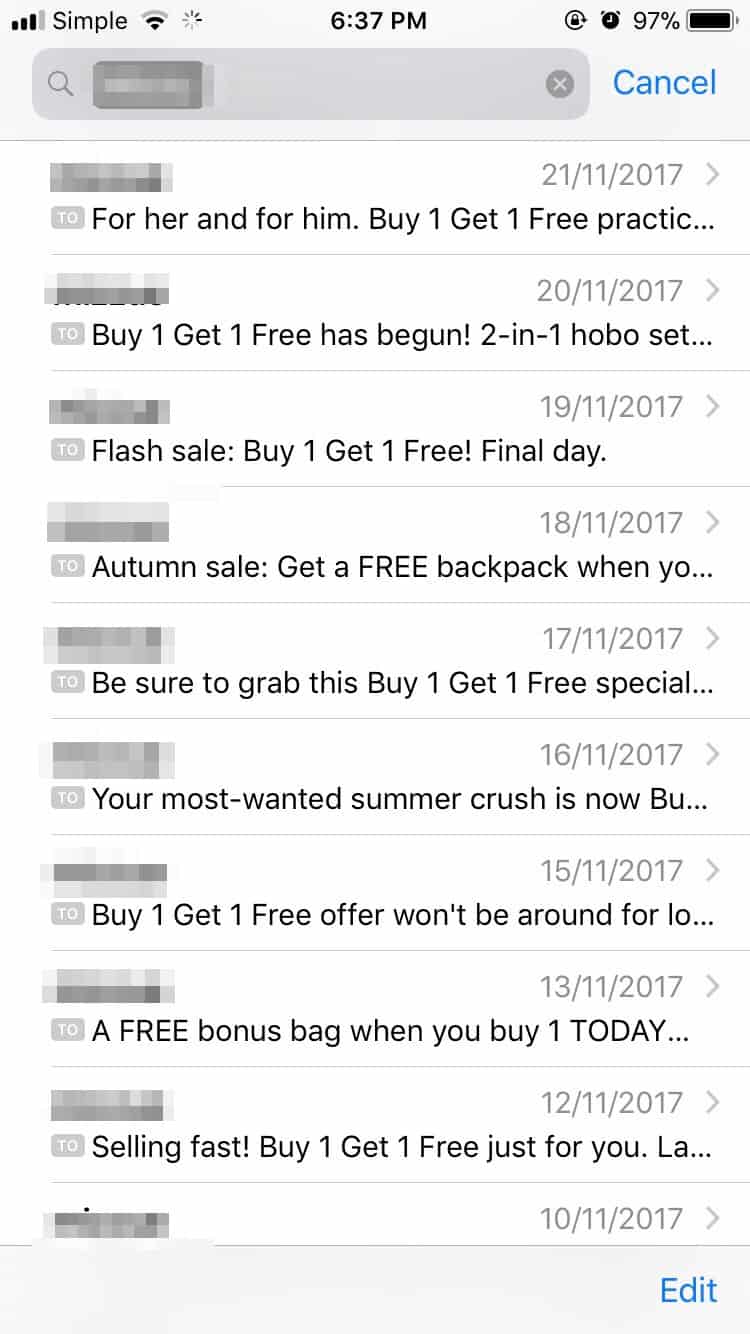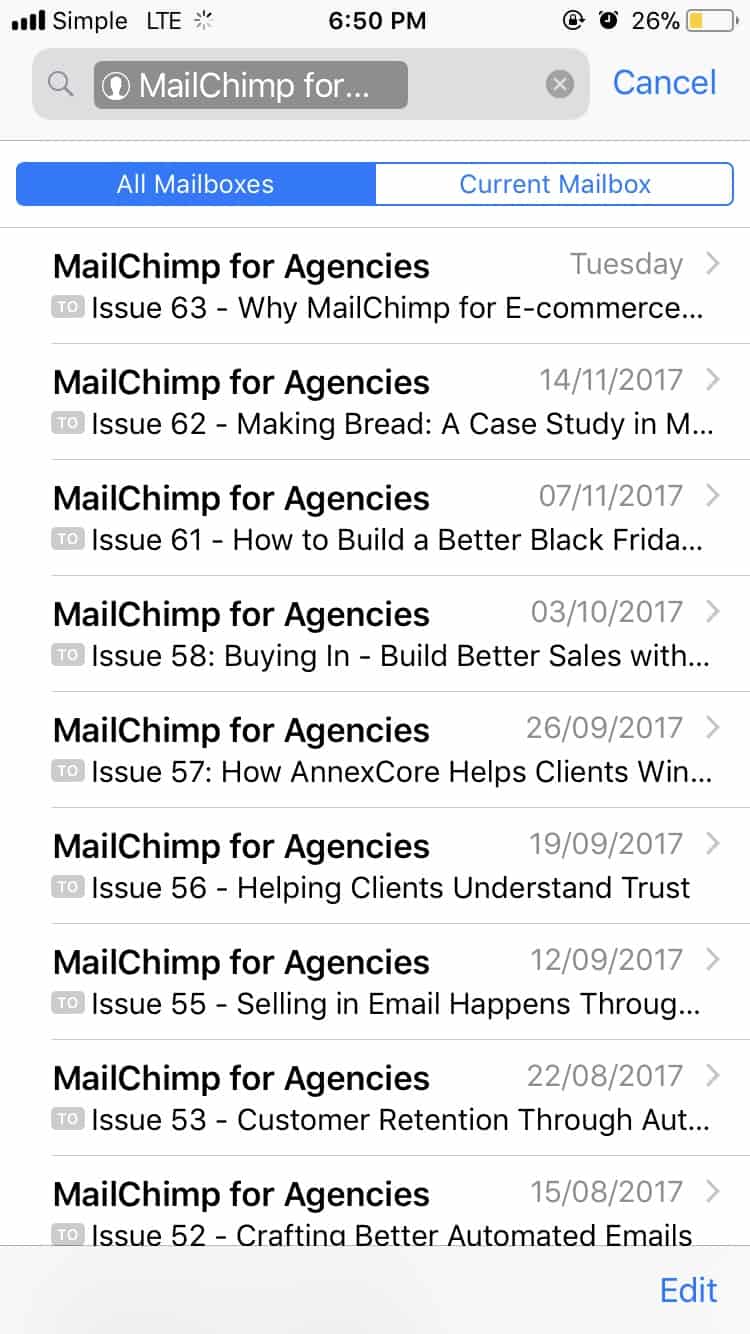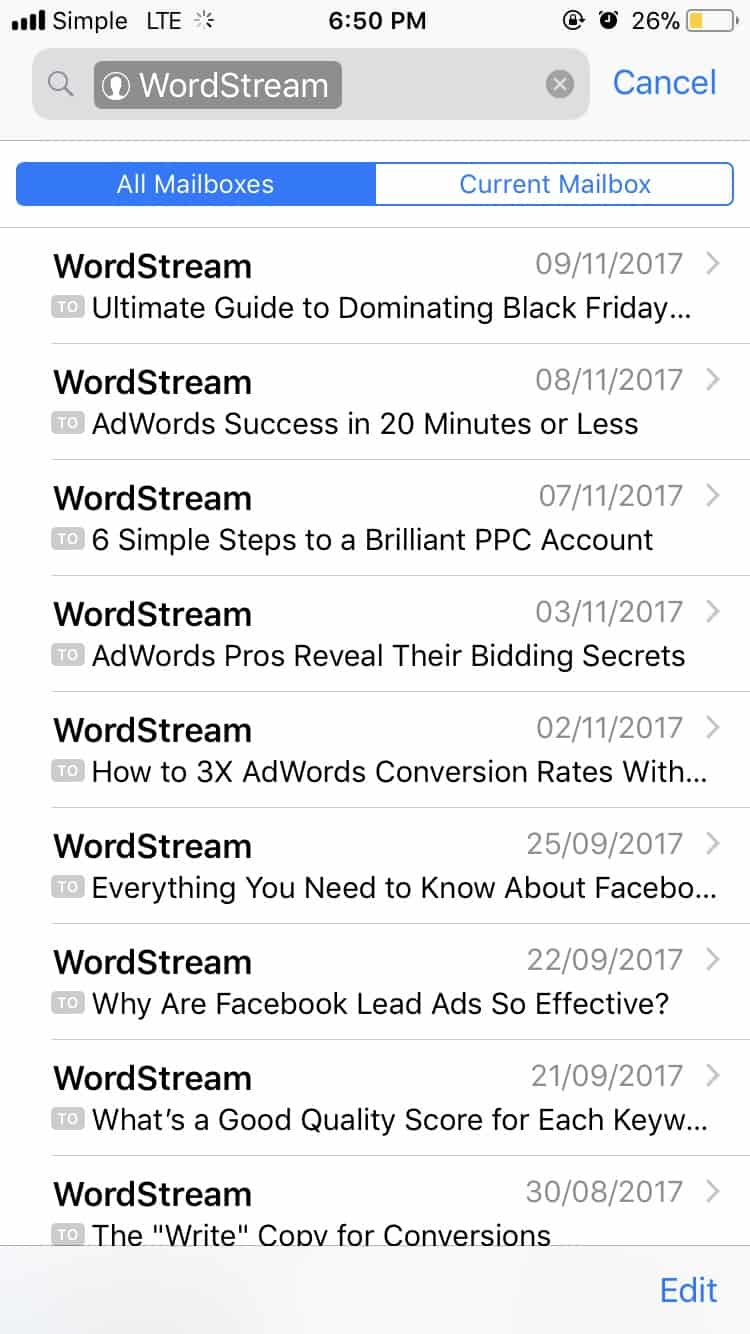Email marketing is simple, but hard to execute properly. Most of the time, marketers blindly do what they are used to without realizing that there are more effective ways to use email marketing.
In this article, you’ll learn the 5 ineffective email marketing examples and why you should avoid them if you want to grow your business:
- Sending only newsletters
- Sending promos/discounts disguised as newsletters
- Not using autoresponders
- Sending to your entire list
- Not having a lead nurturing strategy
Stop for a moment and think about the last email you sent from your email marketing software.
I’m 99.99% sure that you call that email a newsletter. And I’m 99.99% sure that the contents of that email have something to do about your current promos or events.
Did I get that right?
If I did, read on.
If not, you’re most likely using email marketing effectively.
Ineffective Examples of Email Marketing: What Is It and How to Spot It
Before proceeding, I’d like to take this chance to say that this post contains examples of ineffective email marketing.
- If you’re looking for examples of email marketing malpractices or illegal ways people use email marketing, you can find them here 👆
- If you’re looking for different email marketing examples, you can find them here 👆
I highly recommend reading those. You might be doing those email marketing tactics but aren’t aware that they’re illegal. Or maybe you’re new to email marketing and the only thing you know are sending newsletters and promo emails.
Now that that’s out of the way, here’s a list of ineffective ways marketers use email marketing.
Why are they ineffective?
- These tactics are not violating any laws. If they did, they’ll be under the list of malpractices.
- They are not bringing in results to your organization. Or if they are, it’s most likely taking a long time. This is the primary reason why they are ineffective.
5 Ineffective Email Marketing Tactics Used by Marketers
1. Sending only newsletters
Sending newsletters is a given in any organization that uses email marketing. Most of the time, this is sent at least once a month.
There’s absolutely nothing wrong with this. In fact, this is better than not sending any emails to your prospects and customers at all.
Why is this ineffective?
Studies have shown that it’s better to send an email at least every 2-4 weeks. This allows you to “stay top of mind” with your prospects and customers.
But if this is the only email type you’re sending, you’re not using email marketing fully. There are 12 different types of email you can send using email marketing.
And using only one puts you at a disadvantage.
2. Sending promos/discounts disguised as newsletters
Newsletters originally came from company bulletin boards. If you aren’t aware, these are spaces intended for posting of public messages, awards, and other memos.
Then, when organizations started using email, information was disseminated through the company mailing list. See, before the internet, email was only used internally by employees. Thus, the company newsletter.
When the internet arrived, marketers adopted this mass broadcasting of information.
In the early days of digital marketing, newsletters were used to summarize blog posts, company announcements, and events that happened to keep the public informed and up-to-date.
However, with the growth of eCommerce — especially the group buying and flash sale sites — the newsletter has lost its true purpose. It has become a way to advertise sales and promos.
Why is this ineffective?
Again, there’s nothing wrong with sending these kinds of email.
But, you have to be careful when you use this tactic. If you do not consider your message carefully, you will only end up sending irrelevant content to your email list.
Or another way to put it, if this is the only type of email you send out, you’re only going to irritate your recipients.
Here’s a specific example…
The call-to-action they have on their website is to join the newsletter. Pretty standard for an eCommerce site.
After joining, here’s the only thing I received from them:

Everyday it’s about a sale. It’s about them getting something from me.
When people subscribe to a newsletter, they expect content. They expect to receive something valuable to them.
Not sales.
Not promotions.
Take a look at some of the organizations that do this well.


Both send at different intervals.
- MailChimp sends once a week;
- WordStream sends daily emails
Do you see anything sales related?
The emails were all about me getting something from them. Not the other way around.
That’s also the biggest reason I read them all because it helps me grow. I learn from it. That’s why I keep using these services.
3. Not using auto-responders
Auto-responders fall under the transactional category of emails. They are sent only after a certain action by someone.
Most common uses of auto-responders are a reset password email and a confirmation email.
Why is this ineffective
If your organization is not using this, you are missing out on developing that relationship with your audience.
Auto-responders have the highest open rate among all types of emails. If you want to communicate something, this is the email to use.
If you’re using marketing offers (aka lead magnets), you should have a confirmation email that supports the message in your thank you page.
4. Not segmenting your list
Segmenting your list is one of the components of effective lead management.
Segmenting means categorizing the people in your database based on certain criteria and/or behaviors.
Some examples of segments that every organization should have are as follows:
- Blog subscribers
- Leads
- Opportunities
- Customers
Why is this ineffective?
If you subscribed to a blog, what is the message you’d expect to get from that organization?
Content from their blog, right?
But this isn’t the case. Most of the time, organizations send promotional emails disguised as newsletters. This creates a cognitive dissonance in your audience.
These nuances add up. Different people have different thresholds. Once you go over that limit, you lose that person forever.
For example, you have a customer who just bought an item at a regular price. If you are not segmenting your list, you could end up sending a promo for the same item to the person who just bought at a regular price.
You’d end up disappointing that new customer. Albeit small, that person might not buy from you at regular prices anymore.
5. Not having a lead nurturing strategy
A proper lead nurturing strategy is essential if you want to succeed in email marketing.
An effective nurture strategy has one goal — to move that person from one stage in the funnel to the next.
Naturally, you need a well-defined marketing and sales funnel for that to happen. A sample funnel which I described in the previous section is this:
- Blog subscriber
- Lead
- Opportunity
- Customer
Once someone enters a specific segment, that person should be sent automated emails that moves them to the next stage.
Why is this ineffective?
Without a cohesive strategy to manage your leads, you will end up failing in email marketing.
Let’s say you attended an event. You gave out dog treats in exchange for the person’s email.
When you get back to your office the next day, you added everything to your email marketing software. Then, send them your on-going promotions.
If you’re thinking that’s the right thing to do, you’re not thinking long-term. You’re violating the primary goal of lead nurturing.
The first thing you should send is a thank you email. Next, you should send them more info about your company, what you do, what makes you different, etc.
This warms up the lead. It “reminds” them who you are. It shows that you care about them, not just their money.
What About You
It’s no wonder a lot of marketers say their email marketing isn’t working.
Sending sales-y messages isn’t wrong. But it should not be the only thing you send out from your email marketing.
Almost everyone is doing that. If you want to stand out, it’s really easy.
Stop sending these sales messages.
Create helpful content. Send them to relevant segments. Focus on adding value through education.